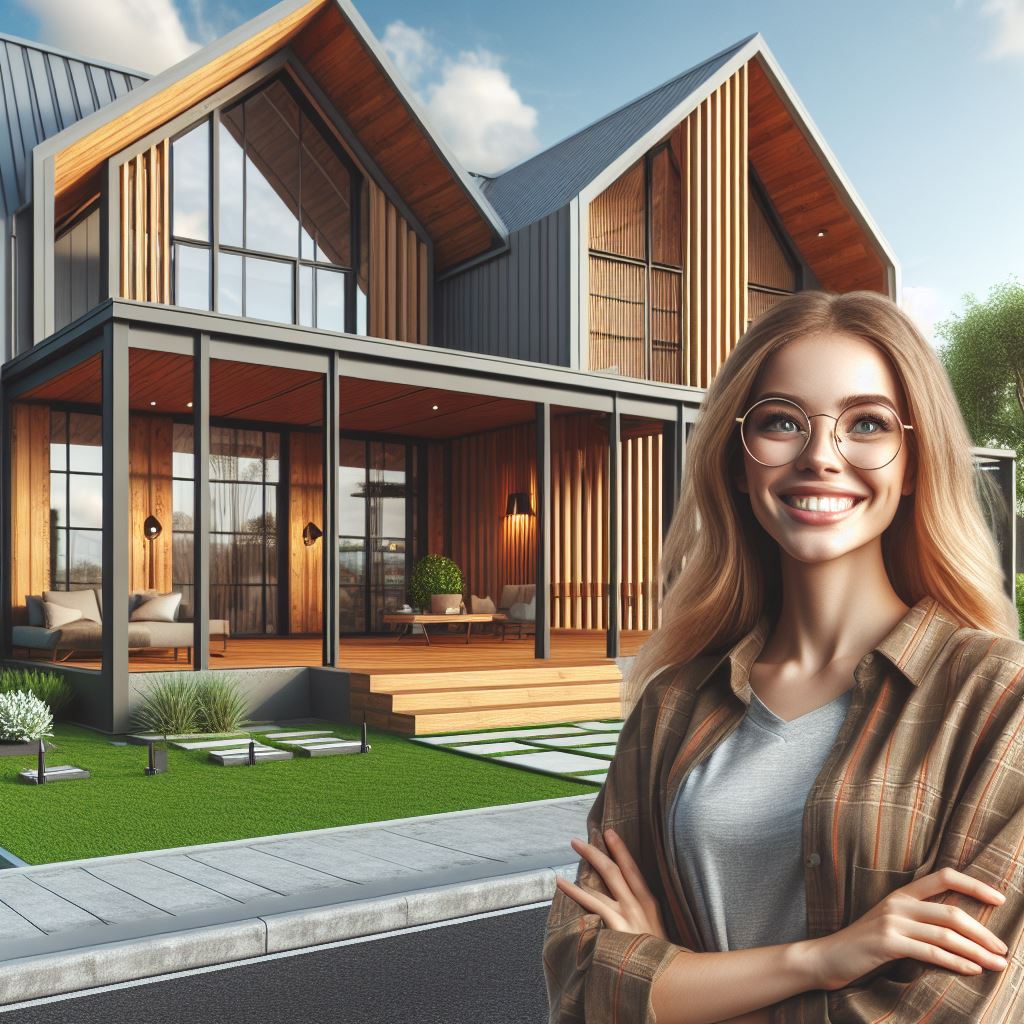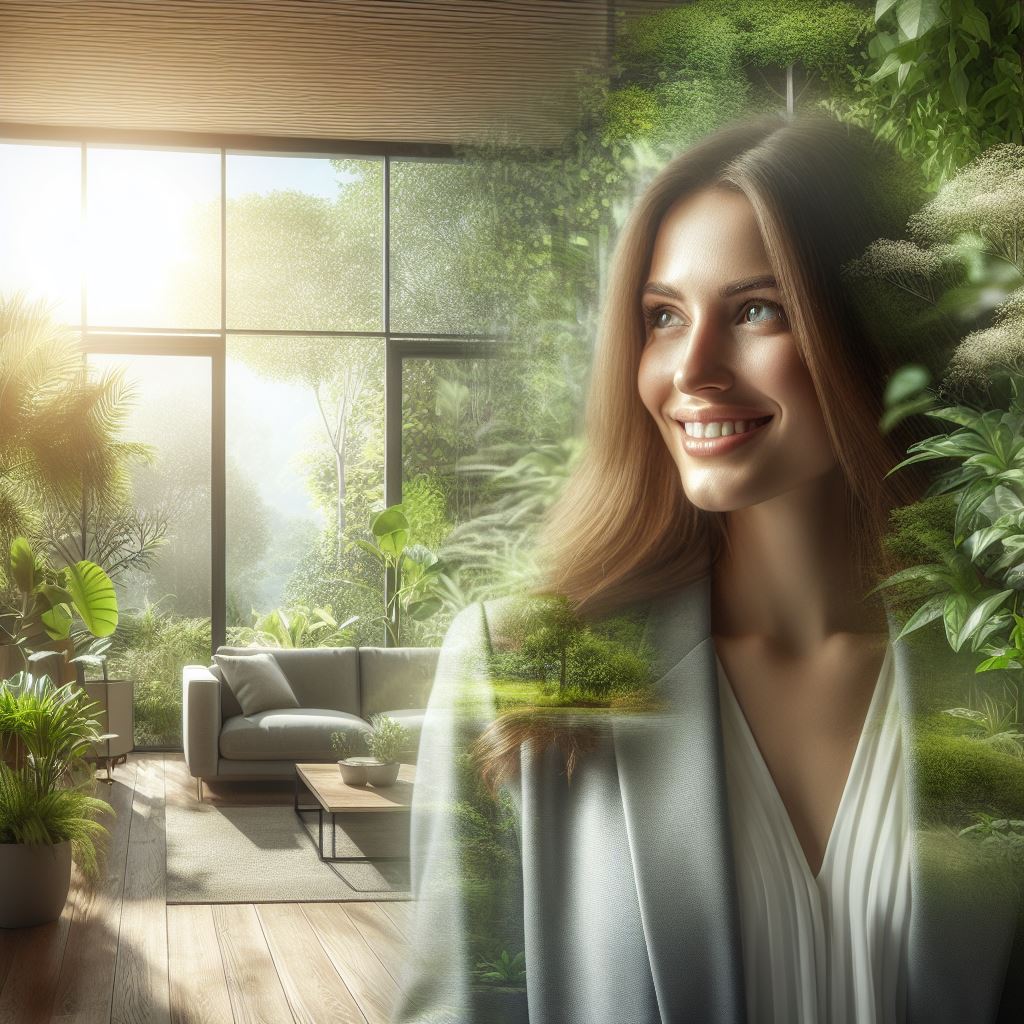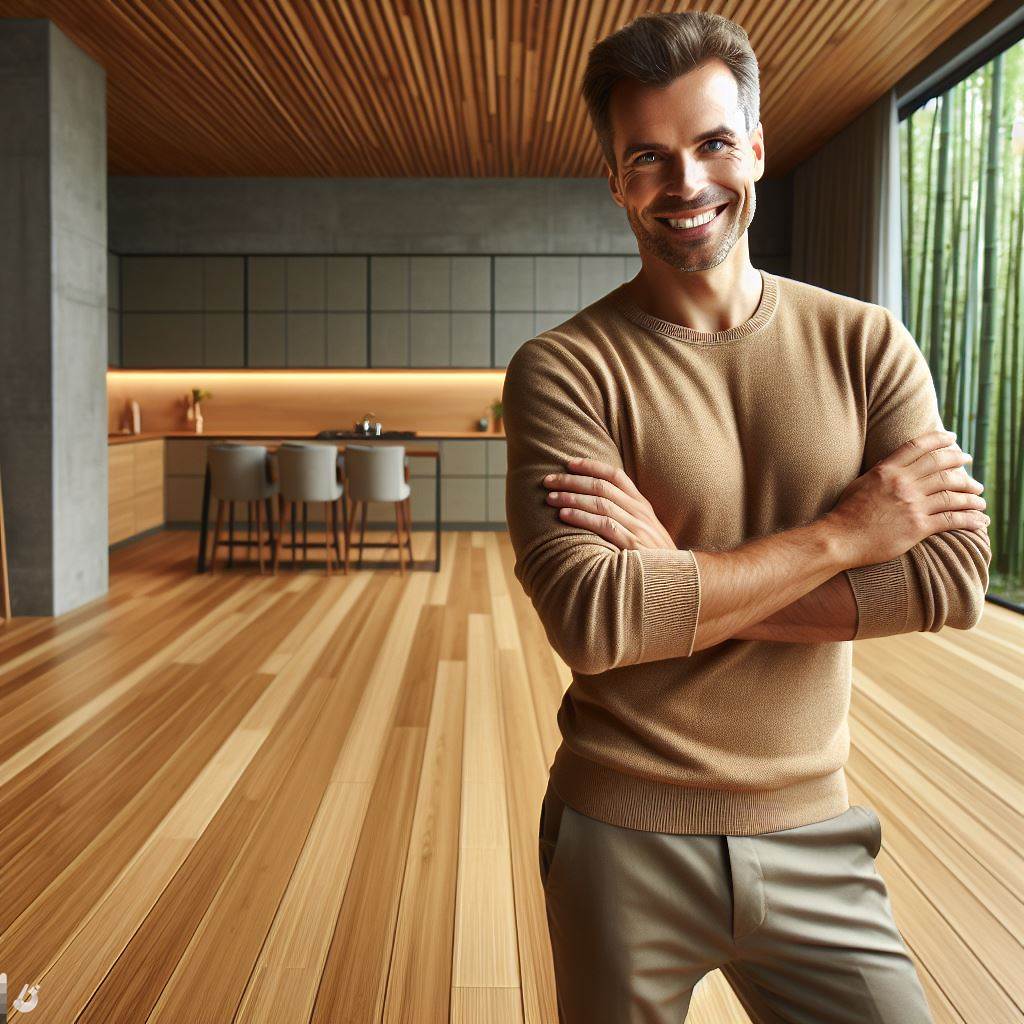Introduction
In the realm of architectural aesthetics, exterior design materials stand as the cornerstone, shaping the visual narrative and structural essence of buildings.
Their significance transcends mere ornamentation, influencing curb appeal, durability, and overall property value.
This blog post endeavors to unravel the intricate tapestry of exterior design materials, offering an insightful exploration into the trends that will dominate the architectural landscape in 2024.
Beyond a cursory glance, we will scrutinize the very fabric of innovation and sustainability, delving into cutting-edge technologies that redefine the possibilities for outdoor spaces.
As we embark on this odyssey, envision a future where materials not only adorn but also actively contribute to the environmental and structural harmony of our surroundings.
From sustainable marvels to materials boasting unparalleled resilience, we aim to guide architects, designers, and homeowners toward choices that embody both aesthetics and functionality.
Throughout this discourse, anticipate a nuanced understanding of the materials that will shape the exterior design narrative, creating spaces that not only captivate the eye but endure the test of time.
Join us in this exploration of the forefront of architectural materiality, where each selection carries the promise of transforming outdoor spaces into veritable works of art and endurance.
Read: Smart Lighting: A Bright Idea
Traditional Materials
When it comes to exterior design, traditional materials like wood, brick, and stone continue to be popular choices.
These materials not only enhance the aesthetic appeal of a building but also provide durability and versatility.
Let’s delve deeper into each of these traditional materials and explore their distinct qualities.
A. Wood
Wood has been used for centuries in exterior design due to its natural beauty and versatility.
It can be crafted into various architectural styles, making it suitable for both modern and traditional designs.
The durability of wood depends on the type of wood chosen, with cedar, redwood, and pine being popular options.
However, wood requires regular maintenance, such as staining and sealing, to protect it from rot and insect damage.
It is essential to consider the cost of maintenance and the initial investment when using wood for exterior design.
B. Brick
Brick is renowned for its timeless appeal and classic look. It adds a sense of warmth and charm to any building.
One of the key advantages of using brick is the wide range of color options and patterns available. This allows for customization and flexibility in design.
Brick is also known for its durability, with some structures lasting for centuries.
Additionally, brick offers energy efficiency, as it provides excellent insulation, reducing heating and cooling costs.
It is a material that stands the test of time while offering practical benefits.
C. Stone
Stone is another material commonly used in exterior design. It gives a sense of grandeur and sophistication to a building.
Different types of stone, such as granite, limestone, and slate, offer unique aesthetics and textures.
Stone is highly durable and can withstand harsh weather conditions, making it suitable for both residential and commercial projects.
However, the cost of stone can be considerably higher compared to other materials, and installation requires expertise and precision.
Therefore, it is essential to carefully consider budget and installation factors when choosing stone for exterior design.
In essence, traditional materials like wood, brick, and stone continue to play a significant role in exterior design.
Wood offers natural beauty and versatility, while brick provides timeless appeal and durability. Stone adds a touch of elegance and uniqueness.
Each material comes with its own set of qualities and considerations, such as maintenance, cost, and installation.
By carefully weighing these factors, one can select the ideal material that not only enhances the appearance of a building but also stands the test of time.
Read: Color Trends 2024: Bold in Modern Homes
Emerging Materials
When it comes to exterior design, it is crucial to select materials that not only enhance the overall look of a building but also possess the necessary qualities to withstand various environmental factors.
As the year 2024 approaches, several emerging materials have gained popularity in the realm of exterior design.
Among these materials, fiber cement, metal, and glass offer unique advantages and contribute to the modernization of architectural aesthetics.
A. Fiber Cement
Fiber cement is a highly durable material that has gained recognition for its exceptional longevity.
It is composed of a mixture of cement, cellulose fibers, and sand, resulting in a composite that is resistant to rot, fire, and insects.
This resilience is especially appealing for exterior applications, where exposure to the elements is inevitable.
Additionally, fiber cement requires minimal maintenance, allowing homeowners and building owners to enjoy its benefits without the hassle of frequent repairs.
In terms of design possibilities, fiber cement offers immense versatility.
The material can be manufactured to resemble various traditional siding materials, such as wood or stucco, while also offering unique textures and patterns.
This flexibility enables designers and architects to achieve specific aesthetic goals for their projects.
However, it is essential to consider the cost and installation requirements of fiber cement, as they may vary based on the chosen design options.
B. Metal
Metal, another emerging material in exterior design, has witnessed a surge in popularity due to its sleek and contemporary appearance.
The use of metal in architectural applications lends a modern and industrial feel to buildings.
Aluminum, in particular, is chosen for its lightweight properties and resistance to corrosion.
Steel, on the other hand, offers superior strength and durability.
Depending on the desired aesthetic and functional requirements, different types of metal materials can be employed to achieve the desired look for a building’s exterior.
While metal materials bring a unique visual appeal, it is crucial to consider their practical aspects.
Cost, maintenance needs, and energy efficiency should be taken into account when opting for metal in exterior design.
For example, aluminum, being lightweight, is easier to install but may require regular protective coatings.
Steel, although sturdy, may be more expensive and require additional maintenance to prevent rust and corrosion.
Additionally, incorporating energy-efficient features, such as proper insulation and reflective coatings, can enhance the overall performance of metal materials in terms of thermal efficiency.
C. Glass
Glass, known for its transparency and elegance, is widely used in contemporary and modern exterior designs.
It allows abundant natural light to enter a space, creating a bright and open atmosphere.
Glass also offers a seamless connection between indoor and outdoor areas, blurring the boundaries and expanding the overall perception of space.
Moreover, glass panels can be customized to provide various aesthetic effects, such as frosted or tinted options, contributing to privacy needs or specific design preferences.
However, incorporating glass requires careful consideration.
Privacy concerns may arise due to the transparent nature of the material, especially in densely populated areas.
Maintenance is also a factor, as glass surfaces may require frequent cleaning to maintain their clarity and transparency.
Energy efficiency is another aspect to evaluate, as the large expanse of glass can affect a building’s thermal performance.
Choosing low-emissivity (low-E) glass and incorporating proper shading techniques can help improve the energy efficiency of glass installations.
As exterior design trends continue to evolve, materials such as fiber cement, metal, and glass have emerged as popular choices due to their unique properties and design possibilities.
Whether it is the durability and versatility of fiber cement, the contemporary appeal of metal, or the elegance and brightness of glass, each material contributes to the aesthetic and functional enhancement of contemporary buildings.
By carefully considering the advantages, considerations, and specific requirements of these emerging materials, architects and designers can create stunning exteriors that stand the test of time.
Read: The Rise of Smart Kitchen Tech

Sustainable and Eco-friendly Materials
Sustainable and eco-friendly materials are becoming increasingly popular in exterior design.
These materials offer numerous benefits, both for the environment and the overall aesthetic of a building.
By using recycled materials, green roofs, and composite materials, architects and designers can create beautiful and sustainable exteriors.
A. Recycled Materials
One of the ways to incorporate sustainability into exterior design is through the use of recycled materials.
These materials, which would have otherwise been discarded, can be repurposed and given a new life.
This not only reduces waste but also minimizes the demand for virgin materials.
Using recycled materials has several benefits. First, it significantly reduces the environmental impact associated with traditional manufacturing processes.
By using recycled materials, we can reduce energy consumption, greenhouse gas emissions, and water usage.
Additionally, incorporating recycled materials into exterior design promotes a circular economy and encourages a more sustainable approach to construction.
There are various popular recycled materials used in exterior design.
One example is recycled plastic lumber, which is commonly used as a sturdy and eco-friendly alternative to wood.
Another popular option is recycled glass, which can be transformed into beautiful tiles or used as a decorative element.
Recycled metal, such as aluminum or steel, is also frequently used for its durability and structural properties.
B. Green Roofs
Green roofs, also known as living roofs, are another sustainable option for exterior design.
These roofs are covered with vegetation, providing numerous benefits for both the building and the environment.
Green roofs help reduce stormwater runoff, improve air quality, and provide natural insulation, thus reducing energy consumption.
The materials used in green roofs are carefully selected to support the growth of vegetation while ensuring the roof’s durability and waterproofing.
Vegetation layers, including sedum, grasses, or even small trees, are typically used to create a diverse and resilient ecosystem.
Waterproofing layers, such as specialized membranes or synthetic liners, are essential to protect the structure from water infiltration.
When installing green roofs, various considerations should be taken into account.
Proper drainage and irrigation systems are crucial to maintain the health of the vegetation and prevent water buildup.
Regular maintenance, including weeding and pruning, is necessary to ensure the long-term success of the green roof.
Additionally, it is important to assess the weight-bearing capacity of the building to accommodate the additional load of the vegetation and soil.
C. Composite Materials
Composite materials offer unique advantages for exterior design, combining the benefits of different materials to create a more sustainable and durable solution.
These materials often consist of a mixture of recycled elements, such as wood fibers and plastic, resulting in a product that is both environmentally friendly and aesthetically appealing.
One advantage of using composite materials is their resistance to moisture, rotting, and insect damage.
Unlike natural wood, composite materials do not require frequent painting or sealing, reducing maintenance efforts and costs.
Additionally, composite materials can be molded into various shapes and sizes, allowing for creative design possibilities.
There are different types of composite materials used in exterior design.
Recycled wood and plastic composites, also known as wood-plastic composites (WPCs), are commonly used for decking, fencing, and siding.
These materials combine the natural look and feel of wood with the durability and low maintenance of plastics.
Other composite materials include fiberglass composites, which provide strength and dimensional stability, and recycled rubber composites, which are used for innovative paving solutions.
D. Factors to consider when using composite materials
When considering the use of composite materials, factors such as cost, durability, and environmental impact should be taken into account.
While initial costs may be higher compared to traditional materials, the long-term savings in maintenance and replacement make them a cost-effective option.
Additionally, the use of composite materials contributes to reducing deforestation and waste, making them a sustainable choice for exterior design.
In a nutshell, sustainable and eco-friendly materials play a crucial role in modern exterior design.
By incorporating recycled materials, green roofs, and composite materials, architects and designers can create visually stunning and environmentally responsible exteriors.
These materials offer benefits such as reduced environmental impact, improved energy efficiency, and long-term cost savings.
Embracing sustainable materials is not only a trend but also a necessary step towards a greener and more sustainable future.
Read: Rustic Meets Modern: Hybrid Design Trends
Conclusion
A. Summarizing the Top Materials for Exterior Design in 2024
In 2024, exterior design is redefined by innovative materials, offering both aesthetics and functionality.
Engineered wood, a versatile option, mimics the beauty of natural wood but with enhanced durability.
Aluminum, lightweight and corrosion-resistant, is a frontrunner, blending modern aesthetics with practicality.
Concrete composites, with their eco-friendly attributes, stand out for their sustainability and strength.
High-pressure laminate, evolving with contemporary patterns and textures, adds a touch of sophistication to exteriors.
B. Importance of Considering Factors like Durability, Maintenance, Cost, and Environmental Impact in Material Selection
When choosing materials, prioritize durability to withstand weather extremes and ensure longevity.
Evaluate maintenance requirements, opting for materials demanding minimal upkeep. Consider cost implications, balancing quality with budget constraints.
Embrace eco-conscious decisions, assessing environmental impacts to promote sustainable practices.
C. Encouraging Readers to Explore and Seek Professional Advice to Find the Best Materials for Their Specific Project
Embark on a journey of exploration; immerse yourself in the myriad options available.
Seek guidance from professionals who can tailor recommendations to your project’s unique requirements.
Their expertise ensures a harmonious blend of functionality, aesthetics, and longevity.
By being proactive and informed, you can create an exterior space that not only reflects your style but also stands the test of time.
The top materials for exterior design in 2024 provide a rich tapestry of choices.
Remember to factor in durability, maintenance, cost, and environmental impact when making selections.
The path to a stunning exterior lies in careful consideration and expert advice. Happy designing!




